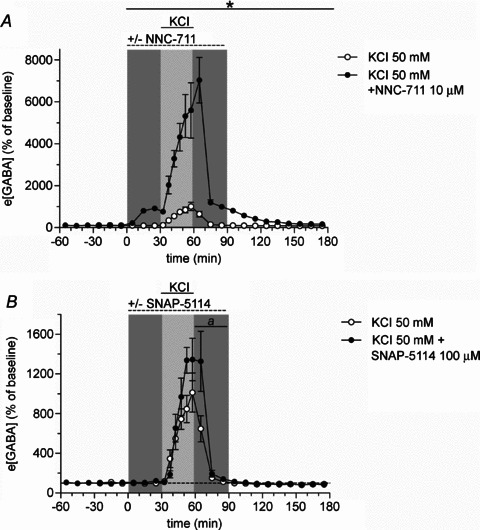Figure 2. Selective blockade of GAT-1 or GAT-3 potentiates the rise in e[GABA] induced by neuronal depolarization.

A, potassium chloride (KCl, 50 mm, 30 min, full horizontal line) was perfused either in the absence of (open symbols, n = 8) or during concomitant perfusion of the microdialysis probe with NNC-711 (10 μm, 90 min, dashed horizontal line) (filled symbols, n = 5). Samples were collected every 10 min or, during KCl perfusion, every 5 min. The effect of KCl on e[GABA] was approximately 7-fold higher in the presence of NNC-711 as compared with the effect of KCl under control conditions. *Significant difference between NNC-711- and vehicle-perfused rats (P < 0.001, t test). B, KCl (50 mm, 30 min, full horizontal line) was infused either in the absence (open symbols, n = 8) or the presence of SNAP-5114 (100 μm, 90 min, dashed horizontal line) (filled symbols, n = 7). Samples were collected every 10 min except during KCl perfusion when 5-min samples were obtained. Repeated-measures ANOVA identified a significantly more pronounced effect of KCl in rats co-perfused with SNAP-5114 than in those perfused with KCl under control conditions (see Results). a, P < 0.05 for KCl + SNAP-5114 as compared with KCl alone (t test). All values are expressed as percentage of baseline (mean ± SEM).
